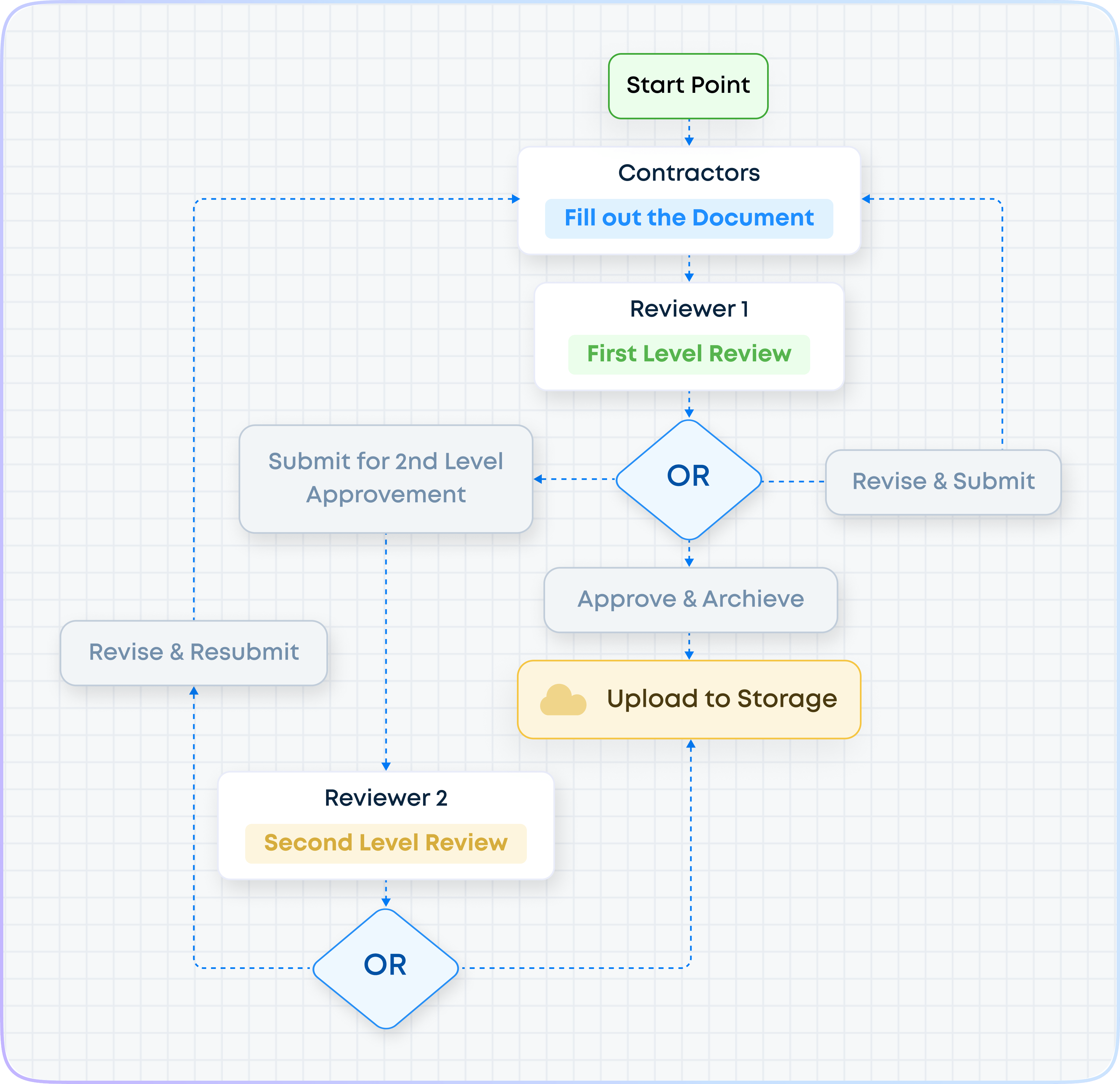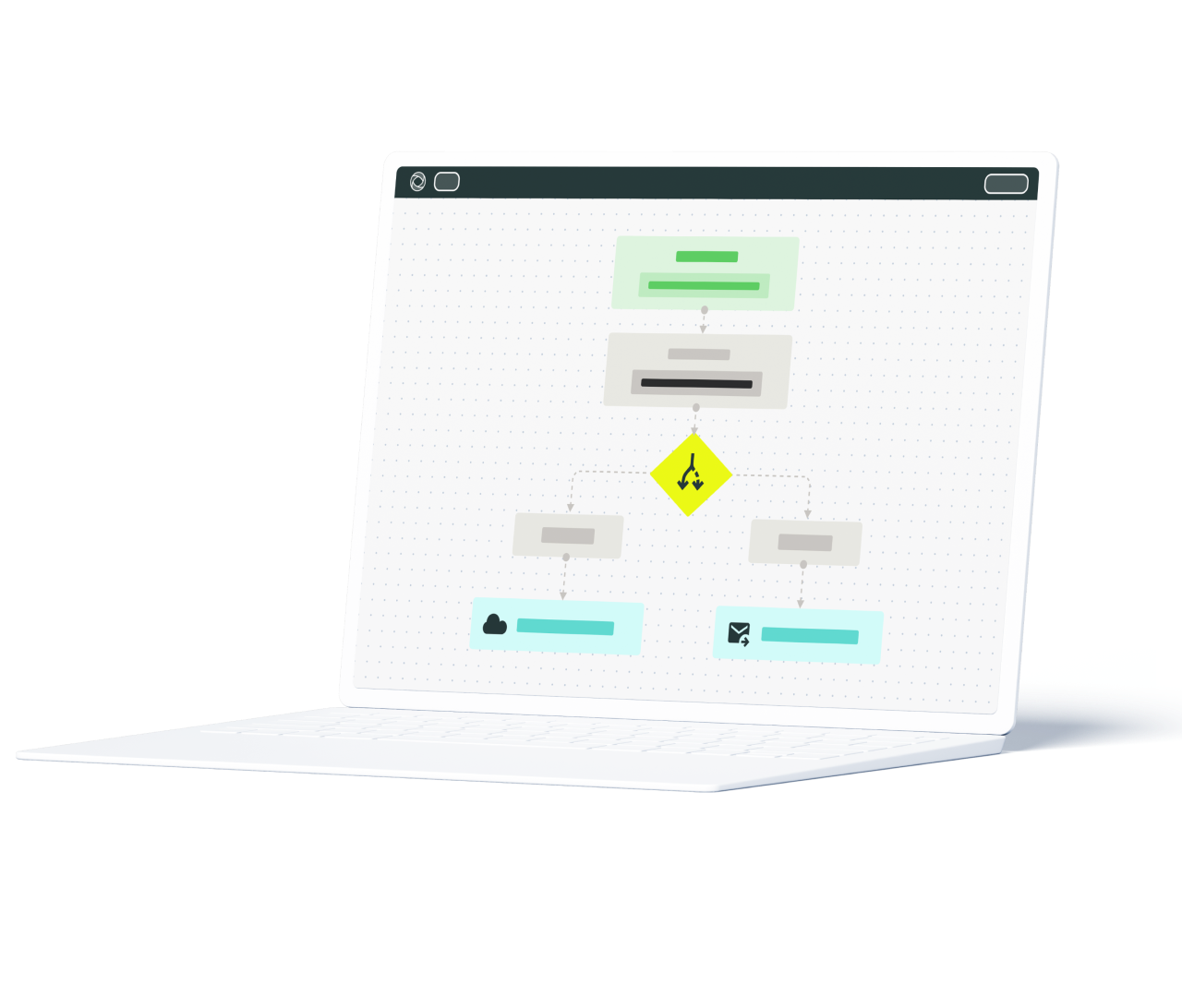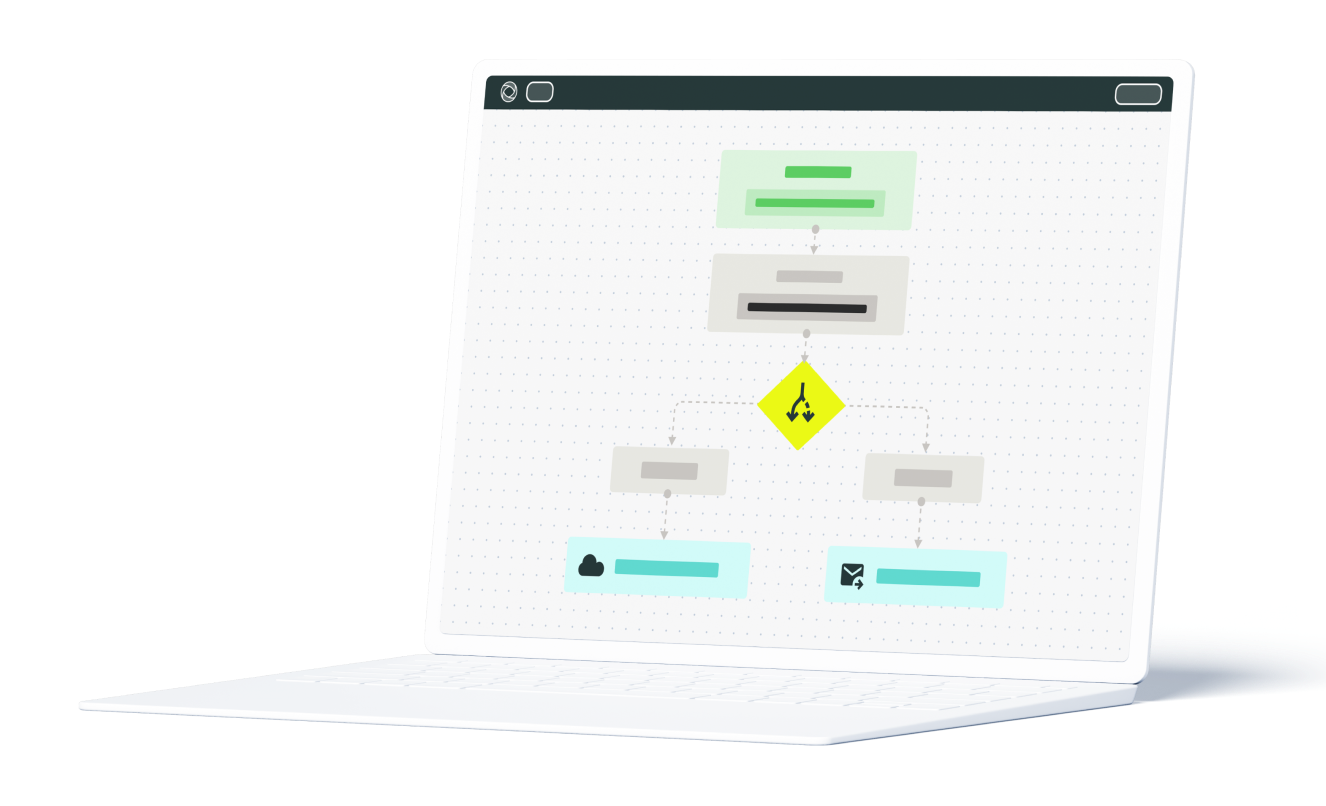What Is an Approval Workflow?
An approval workflow is a step-by-step process that ensures tasks or decisions are reviewed and authorized by the right people at the right time.
It’s a practical way to coordinate work that needs careful consideration and sign off. And, you can use approval flows for just about any task – like handling expense reimbursement, onboarding new employees, or reviewing construction submittals.
Here’s a quick rundown of their key features:
- Clear Steps: Each task flows through predefined stages like submission, review, and final approval.
- Assigned Decision-Makers: Everyone knows their role, duties, and decision-making responsibilities at each stage, ensuring no overlap or confusion.
- Deadline Management: Timeframes can be built into workflows to keep tasks on schedule and prevent bottlenecks.
Whether you’re managing a document approval workflow or a more complicated approval chain, this system makes sure every step is clear, efficient, and easy to follow.
What Are the Steps in an Approval Workflow?
Approval workflows follow a series of steps to make sure tasks are reviewed, authorized, and completed the right way. While the exact process can vary depending on the task or organization, most include these steps:
Step 1: Initiation
It all begins when an employee submits a request or document for approval. This could be anything from a purchase order request to a project proposal.
Step 2: Submission and Routing
Once submitted, the request moves to the first reviewer based on the workflow’s rules. If you’re using an automated system, alerts will be sent to everyone involved, informing them that the workflow process has started.
Step 3: Review and Action
The first reviewer takes a close look at the submission to ensure it’s complete, accurate, and compliant. This is known as the workflow approval stage.
At this point, they can take one of the following actions:
- Approve: If everything checks out, the request moves to the next step.
- Reject: If something’s wrong, the request goes back to the initiator with feedback for corrections.
- Request Changes: If small changes are needed, the reviewer may ask for adjustments without outright rejecting the submission. This is often referred to as “conditional approval,” “approval as noted,” or “approval with exceptions.” It lets the initiator make specific corrections and resubmit without restarting the entire process.
Some requests—like high-value purchases or major changes—might need additional approvals. For example, a construction order that goes over a certain budget may require sign-off from multiple departments.
Step 4: Conclusion
The process wraps up once all the approvals are in, but it’s not always the end.
The very last step might involve processing the request, like issuing a purchase order or kicking off a project. It could include notifying the right people, whether that’s your team or external partners.
Most of the time, the process will also require archiving all documentation for future reference. This helps you maintain a clear record for audits or simply as a backup for later use.
Simplify Your Approval Workflows with Fluix: Start Automating Today
Approval Flowchart Example
Here’s an example of an approval workflow flowchart, laying out all critical elements:
- The initiator submits the request for approval.
- The approver is notified.
- The approver reviews the submission for accuracy and compliance.
- The approver rejects the submission and requests adjustments be made.
- The initiator makes the appropriate changes and resubmits the request.
- The approver reviews the updated submission and accepts it.
- The request is processed.
- All related documentation is archived for recordkeeping.


Benefits of Approval Workflows for Your Organization
Approval flows play a key role in keeping organizations efficient, organized, and accountable. Here’s why they matter:
- Ensure quality and consistency: Designated reviewers help submissions meet the right standards. This keeps mistakes and oversights to a minimum.
- Speed up workflows: Approval workflows guide tasks through the process in an organized and timely way. They keep momentum flowing smoothly and create a straightforward path to follow from start to finish.
- Build accountability and transparency: Each step is tracked, showing who is responsible for what and when. This helps everyone stay informed, while also providing an easy way to monitor progress and ensure accountability.
- Prevent bottlenecks: By spreading tasks among the right people, workflows keep work flowing without overwhelming anyone. This steady pace ensures progress doesn’t stall.
- Help with smarter decisions: Workflows involve the right people at the right stages. With experts weighing in early, potential issues are caught sooner, leading to better decisions and stronger outcomes.
- Increase reliability: With a clear and repeatable process in place, approval flows bring consistency. This makes it easier for teams to meet deadlines and consistently deliver quality results.
- Support scalability: As your business grows, approval workflows scale with you. They create repeatable, flexible systems that keep things reliable and manageable, no matter how much your team or processes expand.
Approval workflows often work with forms like:
How to Optimize Approval Workflows
Making approval workflows faster and easier to manage doesn’t happen overnight, but the right strategies can make a big difference. Here are some of the most effective ways to optimize them:
- Streamline the Process Itself. Take a step back and review your current workflows. Are there unnecessary steps or reviews slowing things down? Simplify wherever you can by removing redundant actions and focusing only on what’s essential. A cleaner workflow keeps things moving without confusion or extra effort.
- Automate Workflows. Repetitive steps like routing requests or sending notifications can slow down workflows and take up a lot of time. Approval workflow software will automate these tasks for you, ensuring requests reach the right people instantly. It can also pre-fill forms and extract data, reducing manual work and making the process quicker and more efficient.
- Use Live Dashboards to Stay on Track. Live dashboards give you a clear, real-time view of where every request stands. They make it easy to see what’s pending, what’s approved, and what needs attention. With one glance, you can identify bottlenecks and make sure your workflows progress smoothly.
- Focus on Training and Awareness. Even the best workflow won’t work if people don’t understand it. Take time to train your team on how your processes work and why each step matters. A well-informed team is more likely to follow workflows and make decisions that align with your goals.
- Monitor and Refine Regularly. Don’t just let workflows run unchecked—track how they’re performing. Look at how long each step takes and identify any recurring delays. Set clear KPIs for your workflows, like approval time or error rates, and measure progress. Use these insights to refine your processes, cutting out bottlenecks and making sure workflows stay efficient as your needs change.
Managing Approval Workflows with Fluix
Every process in your workday should be simple and efficient. That’s the idea, right? But all too often, processes end up slowing you down instead of helping you get things done.
That’s where Fluix comes in. Fluix software makes workflows easy to follow, so you can spend less time worrying about your processes and more time making progress.
Here’s what Fluix brings to the table:
- Built-in Automation: All your repetitive tasks can be fully automated, saving you time and energy. Automate workflow reminders, task routing, progress updates, and more.
- Smart Document Management: Easily upload, share, and retrieve files within your workflows, making sure everyone has access to the latest version without having to dig through emails.
- Real-Time Insights: Always know exactly where things stand with live dashboards. Track every step of your workflows in real-time: see what’s been approved and what still needs attention.
- Ready-to-Use Workflows: Choose from our library of pre-built processes to hit the ground running. Pick ones that fit your needs, tweak them as you want, and you’ll be all set to initiate.
- Custom Workflow Mapping: Got rough outlines or ideas for your approval workflows? Send us your processes as sketches, JPGs, or PDFs, and we’ll turn them into fully operational workflows for you.

